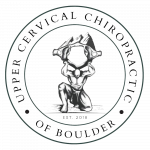What is Scoliosis?
Scoliosis is a condition characterized by an abnormal curve of the spine. The condition often shows up in childhood and is most commonly detected after the growth spurt that precedes puberty. It is also something that can occur later in life as a degenerate disorder.
Sometimes the curvature of the spine is mild, and scoliosis can go undetected. In more serious cases, however, scoliosis can be debilitating and may require surgery. Doctors are not sure of what causes scoliosis, though there are many theories. Modern research has pointed to the potential cause in some cases as a misalignment of the upper cervical spine.
Signs and Symptoms of Scoliosis
One of the most common symptoms of scoliosis is back pain. The curvature of the spine can become muscles on one side of the back to become overstretched, and muscles on the other side to become taut and compressed. Depending on your unique anatomy, the pain may be dull and achy or it may be sharp or stabbing. You may experience stiff muscles and/or fatigue due to strained muscles. In severe cases, scoliosis can impair lung function, or cause heart damage.
Scoliosis is visible in many patients. You may notice when you try to stand straight that one hip or shoulder appears to be higher than the other. You may have a rib cage protrusion that shifts to the left or right when you lean forward or backward. For some people with scoliosis, clothes may fit oddly. Sometimes the curve of the spine is even visible right through the skin.
As mentioned above, sometimes the curvature of the spine can be slight enough that healthcare providers don’t detect it; that doesn’t mean that a person with scoliosis won’t feel symptoms. If you suspect scoliosis may be behind some of your (or your child’s) health problems, you should contact your healthcare provider and consider an evaluation by a chiropractor.
How the Upper Cervical Spine Affects Scoliosis
Sometimes scoliosis can be genetic or due to other health issues, but new research shows that spinal injuries that cause a misalignment of the vertebrae may be the underlying cause in many cases. The upper cervical spine is particularly vulnerable to these types of misalignments; a minor accident, injury, or even poor posture can cause a misalignment in this part of the spine.
The upper cervical spine begins at the base of the skull and is responsible for the carriage of the head and movement of the head and neck. It consists of the uppermost seven vertebrae, which run down through the neck. When the vertebrae in the neck are misaligned, this can set off a chain of problems going all the way down the rest of the body. The body attempts to shift and compensate for misalignments, causing stress and pressure on other joints, muscles, and ligaments.
The strain caused by upper cervical misalignments can damage muscles so they fail to support the rest of the spine properly. This can be particularly detrimental to children who are still growing. In older adults, misalignments can exacerbate problems by wearing down discs and joints as one ages.
How Our Scoliosis Treatment Works
When treating scoliosis, we get to the root of what is often the problem by addressing misalignments of the upper cervical spine. Dr. Christina Coblish and Dr. Ryan Moeskau of Upper Cervical Chiropractic of Boulder are upper cervical specialists. They are trained experts in the Blair Chiropractic Technique—a modern, gentle technique that makes use of advanced technology for more precise alignments.
The Blair technique involves a series of advanced diagnostic 3D imaging scans to target spinal misalignments. The process to correct misalignments is not like most chiropractic techniques people are familiar with; there are no jarring twists and jolts. Instead, Dr. Coblish and Dr. Moeskau swift corrections using minimal force to return the body to a normal, natural, properly aligned state.
The Blair Chiropractic Technique is an effective, drug-free, non-invasive treatment for scoliosis that is safe and effective enough even for children and elderly patients. Once properly aligned, the body’s natural healing mechanisms can resume and put the patient on the road to relief and healing.
If you suspect you have scoliosis, or if you have been diagnosed with it, don’t suffer longer than necessary. We strive to help patients by relieving their pain and creating lasting improvements. Contact us for an appointment; our areas of coverage include Boulder, Longmont, Louisville, Erie, Lafayette, Broomfield, and Denver in Colorado.


